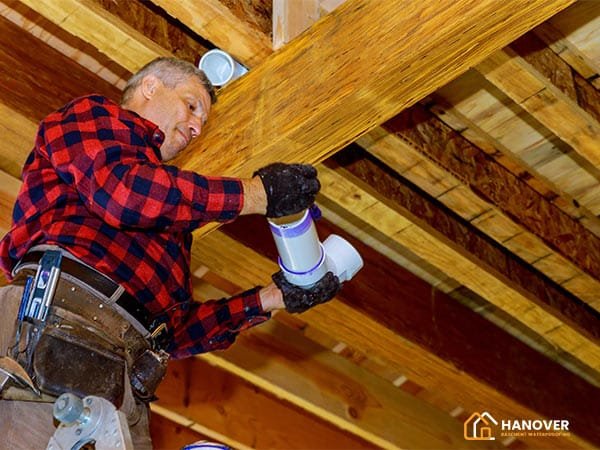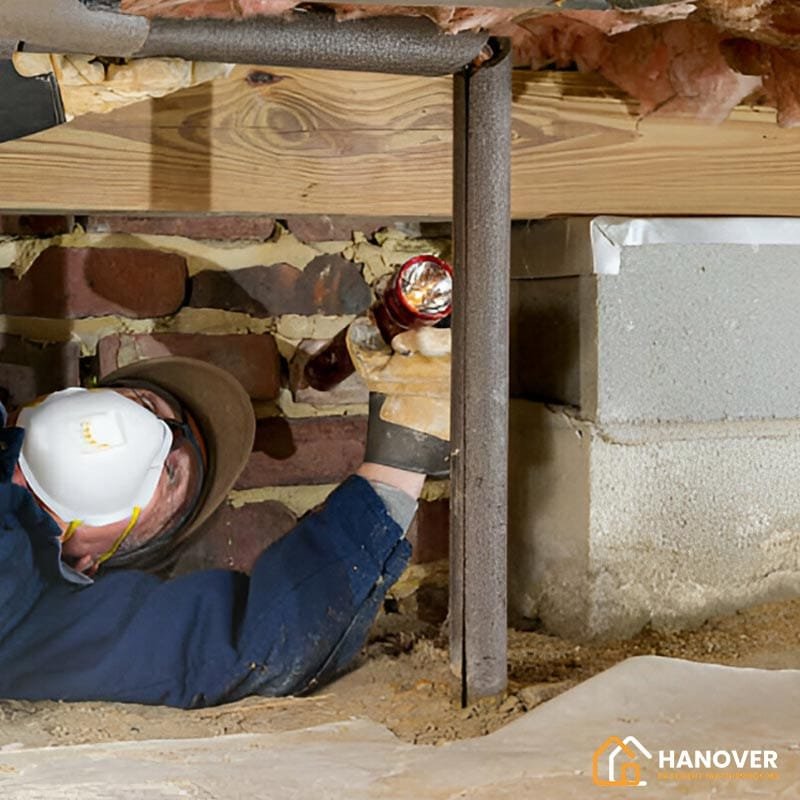Crawl Space Encapsulation and Its Importance
A crawl space is a shallow, unfinished area beneath a house that separates the ground from the first floor. While often overlooked, this space plays a critical role in a home’s moisture control, energy efficiency, and air quality. The decision to address crawl space issues through DIY methods or hire professional services depends on multiple factors, including cost, skill level, risk tolerance, and regulatory requirements.
The process known as crawl space encapsulation involves sealing the space using vapor barriers, insulation materials, and sometimes dehumidifiers to prevent moisture buildup. Effective encapsulation helps avoid mold growth, structural decay, and indoor air contamination. Whether this work should be self-managed or handled by licensed contractors is the core question this article explores.
One of the most common ways to address moisture concerns is understanding how to waterproof a crawl space using barrier systems, drainage mats, and vent sealing.
Evaluating the DIY Approach for Crawl Space Projects
Choosing a DIY crawl space solution may appeal to homeowners seeking lower upfront costs or greater control over the process. With the right research and preparation, DIY efforts can result in competent moisture management and insulation. Common tasks in a DIY project include:
- Installing a polyethylene vapor barrier.
- Applying foam board insulation to the foundation walls.
- Sealing vents and penetrations using waterproof tape.
- Deploying a portable dehumidifier in humid climates.
The cost savings of DIY can be significant. For example, materials for encapsulating a 1,000 sq ft crawl space typically range between $500 and $1,500, depending on the thickness and type of barrier and insulation selected. Many homeowners source materials from trusted retailers like Home Depot or Lowe’s, and install them using standard hand tools.
However, the DIY path is not without limitations. Mistakes in vapor barrier placement, improper sealing, or failure to control water ingress through grading or drainage systems can lead to trapped moisture, which encourages mold and weakens structural components. DIY projects may also fall short of code compliance, especially in municipalities like Hanover, PA, where permits and inspections may apply to insulation work involving foam products or permanent fixtures.
Advantages of Hiring Professional Crawl Space Contractors
Professional services offer access to trained specialists with experience in moisture control, structural reinforcement, and code-compliant encapsulation. Licensed contractors typically begin with a comprehensive crawl space assessment, identifying signs of water damage, foundation shifting, or pest intrusion. Based on this evaluation, they recommend a combination of:
- Seamless vapor barriers, often 12-mil or thicker.
- Closed-cell spray foam insulation for superior R-value.
- Drainage matting and sump pump installation to manage water infiltration.
- Dehumidifier system integration with humidity sensors and auto-drain features.
The professional route is more expensive, generally costing $3,000 to $8,000, depending on square footage, labor, and materials. Yet, this investment includes labor warranties, code inspection guarantees, and systematic installation that minimizes long-term risks. In high-moisture zones like South Central Pennsylvania, the durability and regulatory compliance of professional encapsulation often outweigh the initial expense.
Hiring professional crawl space repair services ensures compliant materials, proper installation, and reduced moisture damage over time.A key advantage lies in building code expertise. For example, contractors operating in Hanover, PA adhere to IRC Chapter 4 guidelines on foundation insulation, which specify material ratings, fire resistance, and installation standards. Compliance with such codes reduces liability and ensures long-term resale value.

Assessing Risk Exposure and Structural Implications
Crawl spaces are highly sensitive to moisture intrusion, ground vapor migration, and seasonal condensation, making risk management essential. Inadequate encapsulation—whether due to poor DIY techniques or delayed professional intervention—can result in:
- Subfloor mold development that affects indoor air.
- Wood rot in structural joists and rim boards.
- Pest infestations driven by warm, humid environments.
- Foundation shifting due to fluctuating ground moisture.
Homeowners attempting DIY installations without proper training often underestimate the importance of thermal breaks, vapor sealing continuity, or drainage plane engineering. A small misstep—such as overlapping vapor barriers improperly or neglecting vertical wall encapsulation—can create unintended microclimates that accelerate mold and mildew growth.
Professionals mitigate this by performing moisture mapping, installing vapor-permeable barriers with appropriate permeance ratings, and integrating crawlspace-compatible HVAC ventilation if needed. This proactive approach ensures risk mitigation aligns with Hanover’s humidity patterns and soil conditions.
Life Cycle Cost Comparison: Upfront vs. Hidden Expenses
DIY crawl space solutions offer initial cost control but can incur higher lifecycle expenses if errors require correction. For instance, if a vapor barrier is punctured or insulation becomes saturated due to poor drainage, the repair cost may exceed that of a professional install.
Let’s consider two scenarios for a 1,200 sq ft crawl space:
- DIY Estimate:
- Materials: $1,100
- Tools and sealants: $250
- Total upfront: $1,350
- Potential redo due to mold (avg.): $2,000–$3,500
- Materials: $1,100
- Professional Estimate:
- Total package (assessment, labor, materials): $5,500
- Includes 15-year warranty and compliance checks.
- Total package (assessment, labor, materials): $5,500
Over time, the cost stability and warranty protection offered by professional services make them more appealing, especially when the structure sits on expansive soil or in high-precipitation zones like south-central Pennsylvania. Additionally, a certified encapsulation can improve energy efficiency, often lowering HVAC costs by 10–20% annually.
Permit, Code, and Warranty Considerations in Hanover, PA
In Hanover, as in many Pennsylvania townships, regulations surrounding crawl space insulation and vapor barriers can influence project legality and inspection requirements. The Pennsylvania Uniform Construction Code (UCC), enforced at the local level, mandates:
- Permits for permanent insulation systems, especially those involving foam board or spray products.
- Flame-spread rating compliance for encapsulation materials.
- Minimum R-value adherence for below-grade wall insulation.
DIY efforts must account for these regulations. Skipping a required permit may result in fines, stop-work orders, or difficulties during home sale inspections. Additionally, most home insurance policies will not honor damage claims related to unpermitted structural alterations.
Professional contractors typically handle permit filing, material compliance, and final inspection coordination. These services, while increasing upfront cost, reduce administrative burden and legal risk for homeowners.
For reference, consult the Hanover Building Code Department or the Pennsylvania Department of Labor & Industry for permit forms and insulation guidelines.
How to Decide: Homeowner Profile and Project Fit
The choice between DIY crawl space work and professional encapsulation depends on your home’s condition, budget timeline, and comfort with risk and technical skills. Below are common homeowner profiles and the encapsulation strategy that aligns best with each:
- Experienced DIYers with knowledge in construction and moisture management may complete projects with moderate success, particularly in dry seasons or for basic vapor barrier installs.
- Homeowners preparing for resale benefit most from professional encapsulation, which adds verifiable value and avoids permit complications during buyer inspections.
- Budget-conscious families may start with phased DIY interventions (e.g., installing a barrier only), later upgrading with professional drainage or dehumidification as funds allow.
- Owners of older homes in Hanover’s historical districts may face structural limitations or legacy code exemptions that require professional consultation.
Additionally, crawl space height plays a key role. Spaces under 18 inches in vertical clearance are extremely difficult to encapsulate safely without contractor-grade equipment.
Exploring Hybrid Crawl Space Strategies
A practical middle-ground for many homeowners is a hybrid approach, where DIY and professional methods are combined strategically. For example:
- DIY Phase:
- Remove debris and old insulation.
- Install base-layer vapor barrier (non-sealed).
- Apply pest deterrent treatments.
- Remove debris and old insulation.
- Professional Phase:
- Conduct structural inspection and air quality assessment.
- Add spray foam insulation and sealed liner.
- Install sump pump and dehumidifier with drain line.
- Conduct structural inspection and air quality assessment.
This strategy allows homeowners to reduce costs without compromising on system performance or long-term durability. It also makes use of seasonal scheduling—completing simpler tasks during dry months and scheduling professional services before winter.
Professionals in Hanover may offer consult-only packages, enabling you to get a customized plan for DIY execution, which ensures code compliance while reducing labor costs.
Regional Considerations for Hanover, PA Homeowners
Hanover’s humid continental climate, combined with older housing stock and mixed zoning, requires regionally-informed decisions. Key local factors include:
- Groundwater tables that fluctuate seasonally.
- Clay-heavy soils prone to expansion and contraction.
- State-enforced insulation and fire safety codes under the UCC.
- High inspection scrutiny in borough-managed homes near downtown Hanover.
Local contractor familiarity with York County permit processes, Adams County soil composition, and state energy codes adds tangible value. It’s important to choose certified specialists or check that your DIY plans meet Chapter 4 of the International Residential Code, adapted in Pennsylvania law.
For homeowners near areas like South Hanover Street, Wilson Avenue, or McSherrystown border zones, where zoning rules may differ, consult the Hanover Borough Zoning Officer before starting work.
Final Thoughts: Choosing with Confidence
DIY crawl space solutions empower homeowners to take initiative on a budget, especially for basic moisture control tasks. Professional services deliver robust, code-compliant systems with lower failure risk and higher return on investment, particularly in complex or large-scale encapsulations.
To make the right choice:
- Inspect your crawl space thoroughly or hire a local specialist for assessment.
- Understand permit obligations before starting.
- Align scope and timeline with seasonal weather trends in Hanover.
- Balance short-term costs with long-term risks and resale value.
By evaluating your specific situation, property condition, and regulatory context in Hanover, PA, you can confidently select the crawl space strategy that ensures safety, efficiency, and peace of mind.
FAQs
Can I encapsulate my crawl space myself?
Yes, you can encapsulate your crawl space yourself, but it requires proper materials and knowledge of moisture control techniques. You might miss key areas if done improperly, leading to further issues. Hiring a professional is recommended for a more effective and long-lasting solution.
How much does professional crawl space repair cost?
The cost of professional crawl space repair varies depending on the extent of the damage and the services required. On average, it can range from $1,500 to $5,000, with more complex issues like mould removal or encapsulation potentially increasing the cost. It’s always a good idea to get multiple quotes to compare prices.
What are the most common DIY crawl space mistakes?
Common DIY mistakes include incorrect vapour barrier installation, inadequate sealing of vents, and failure to address moisture sources properly. These errors can lead to mould growth, pest infestations, and structural damage down the road, often costing more to fix.
How long do professional crawl space repairs last?
If done correctly, professional crawl space repairs can last 5 to 20 years, depending on the materials used and the specific solution. Regular inspections and maintenance will help ensure the repairs remain effective long-term.
Can I combine DIY and professional services to save money?
Combining DIY with professional services is a great way to save money. For example, you might handle basic cleaning and minor repairs while hiring a professional for more complex tasks like encapsulation or mould removal. Just address critical issues with experts to avoid future problems.


